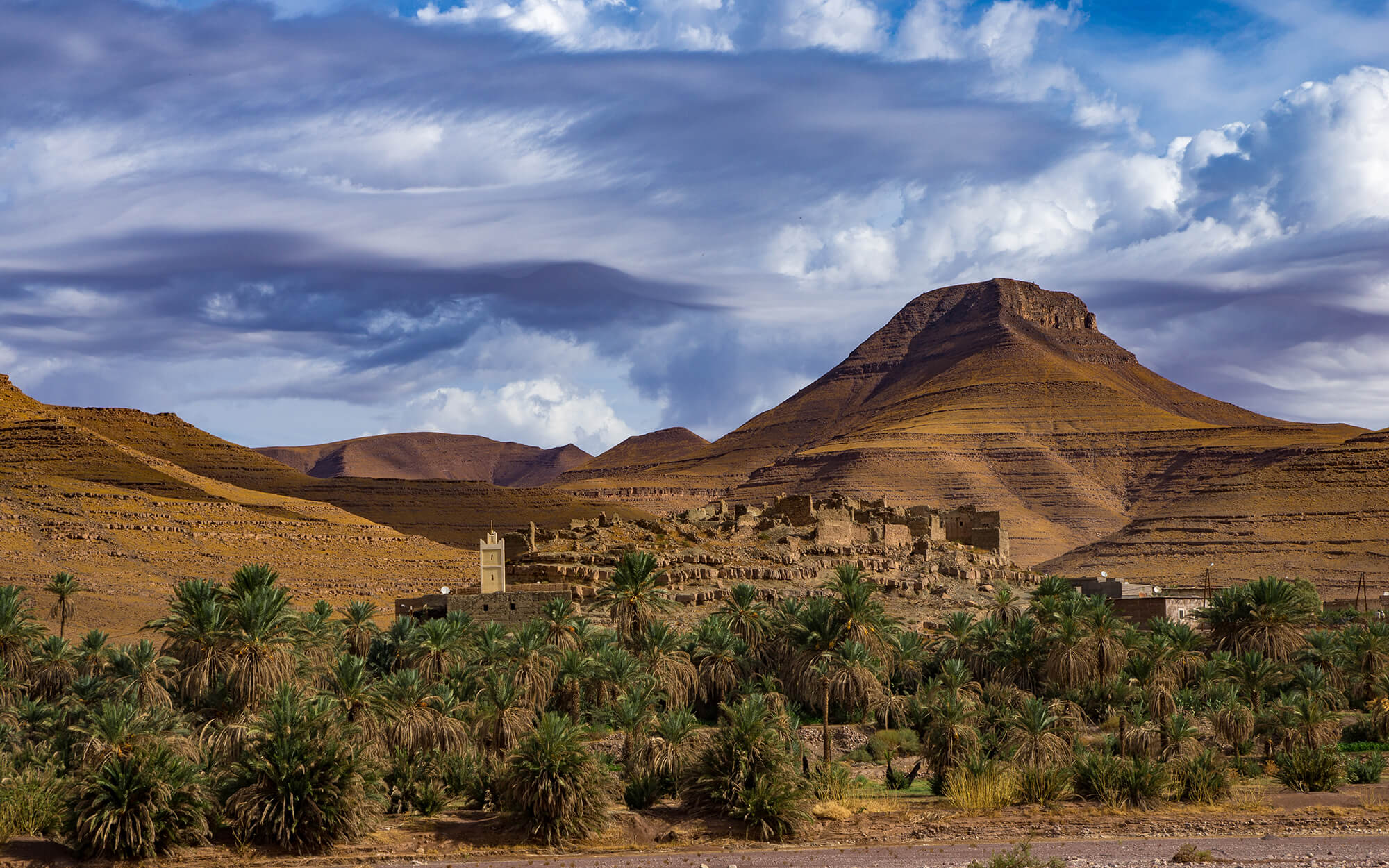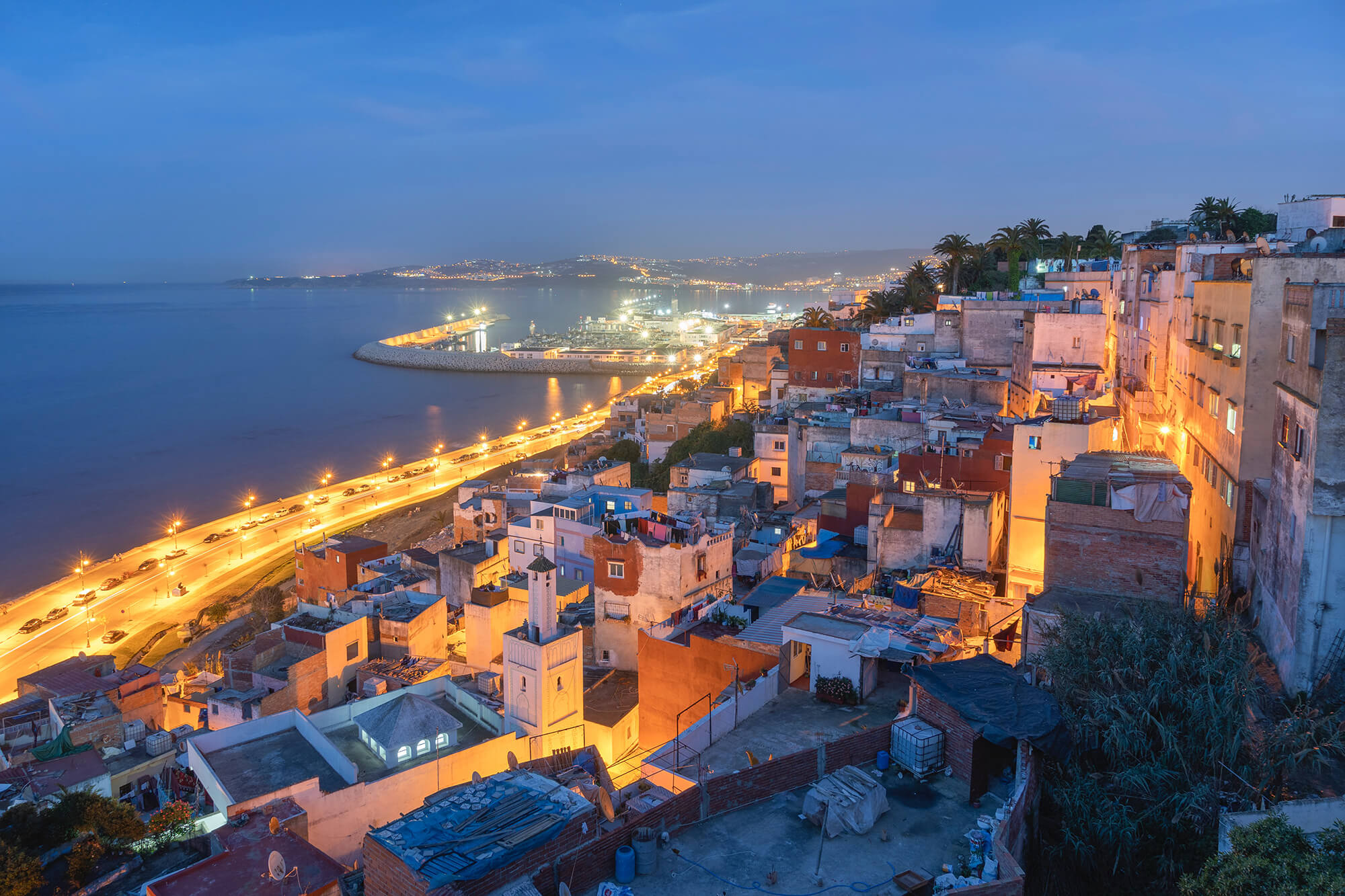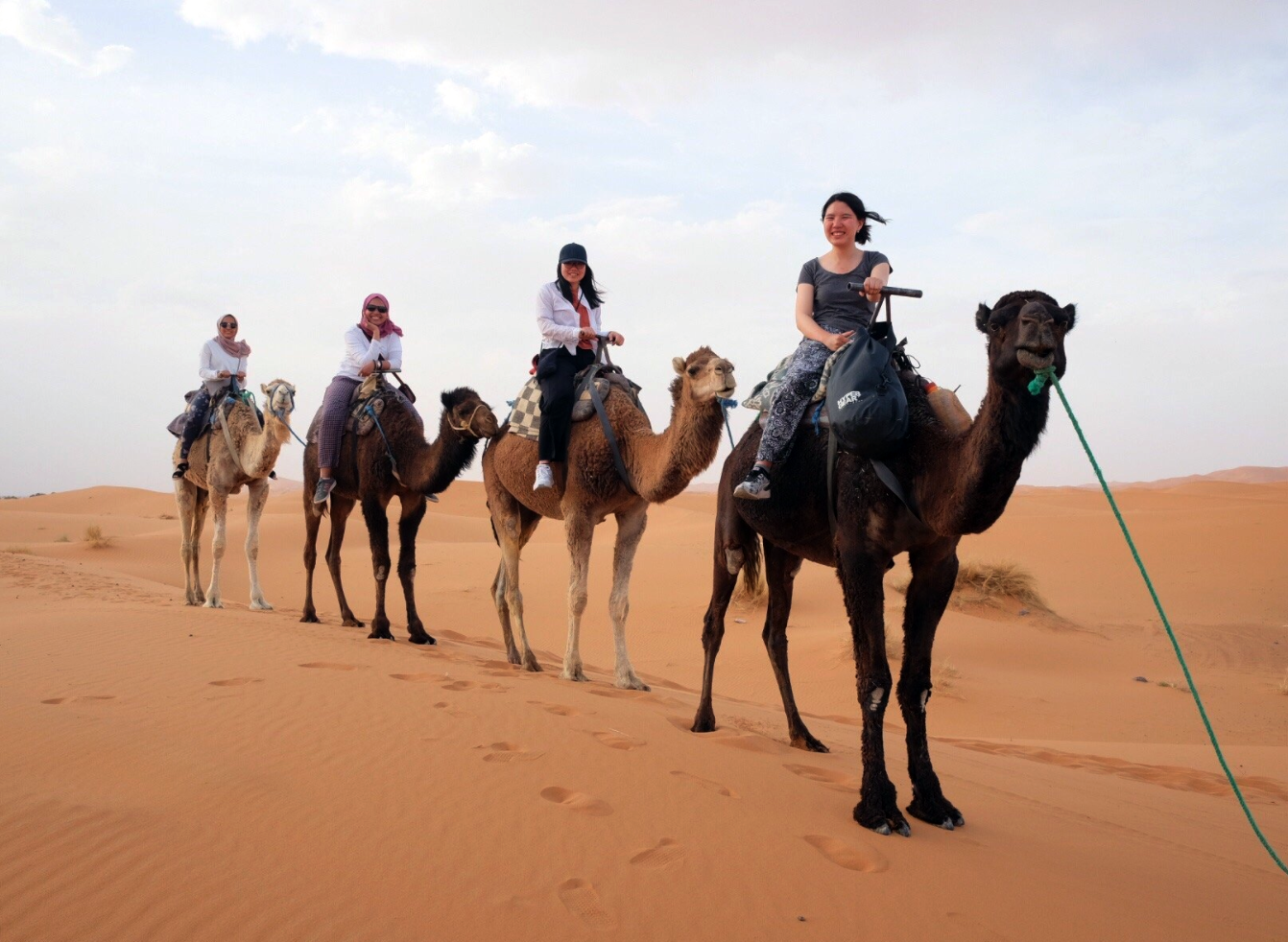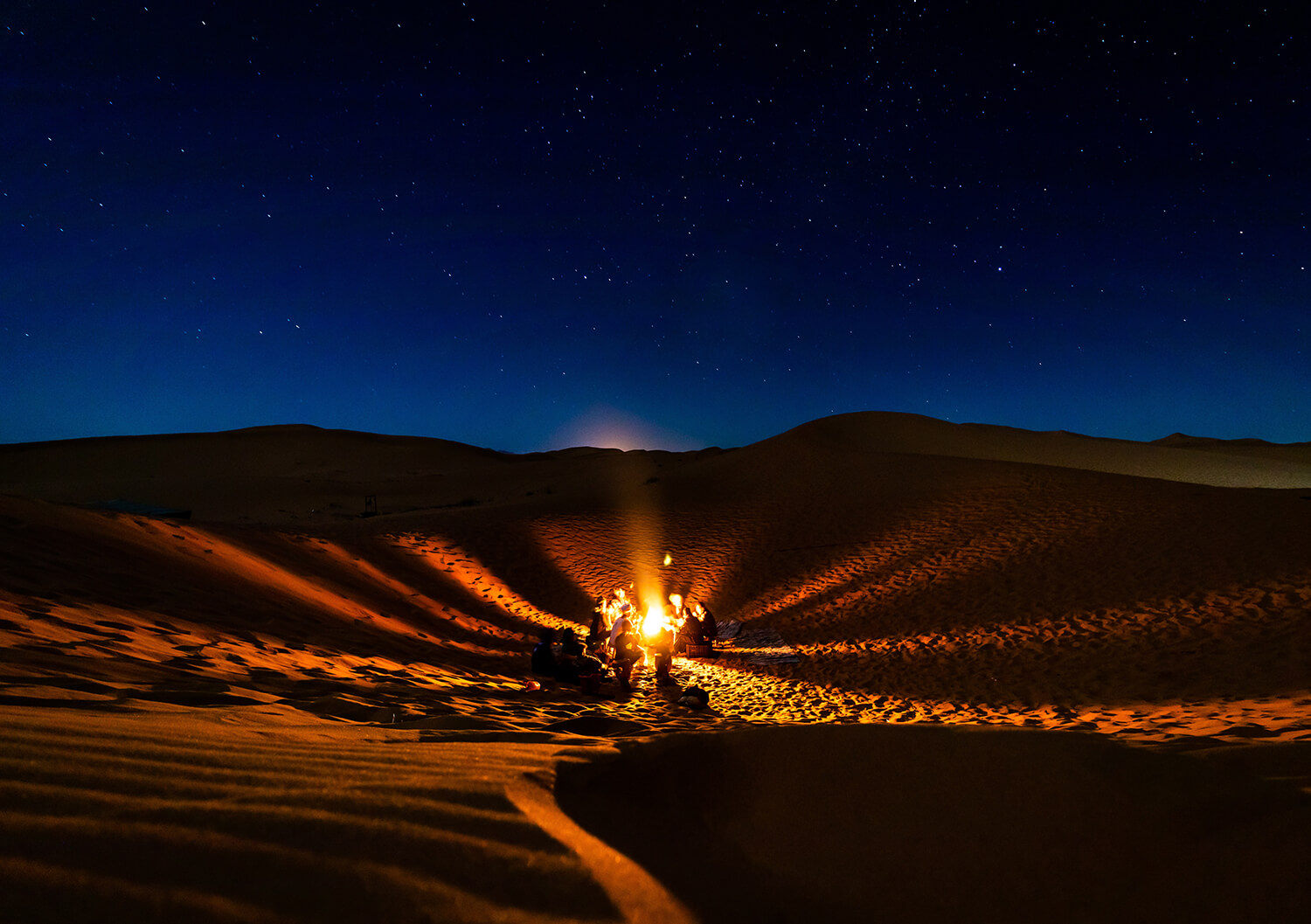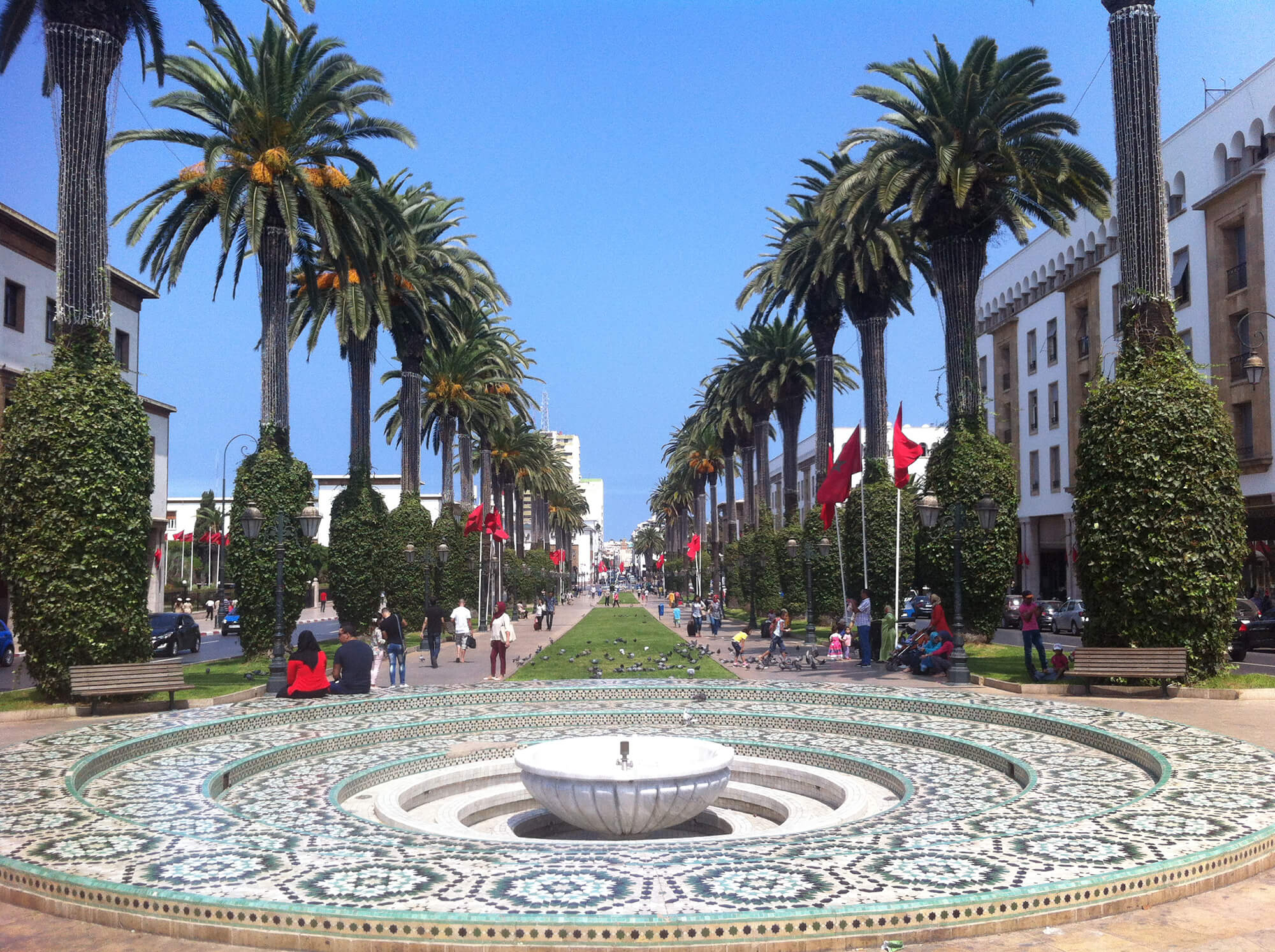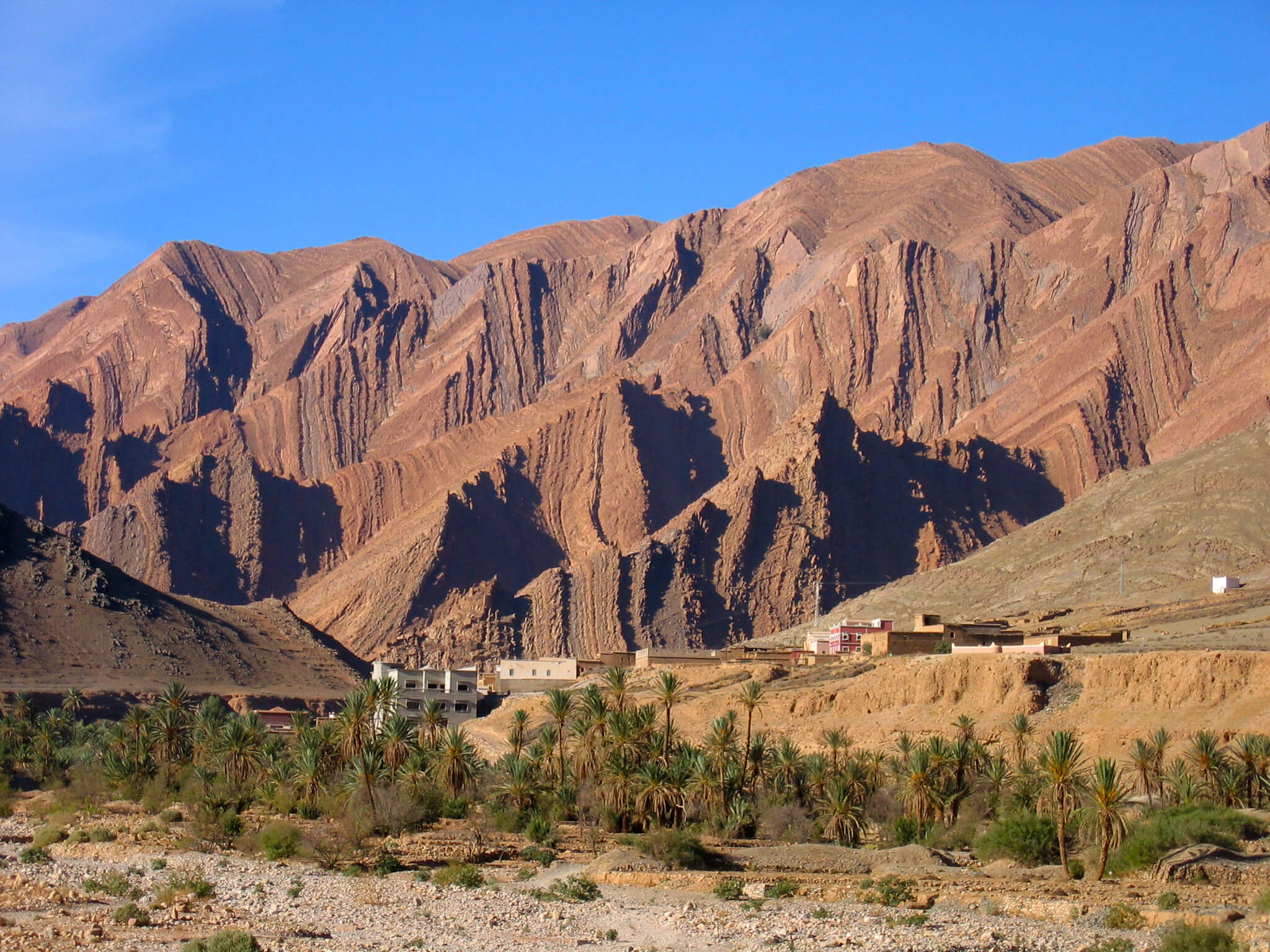Packed with nomadic villages, dreamy vistas, and regional delights, the Souss Valley has it all. Experience rural Morocco in all its glory far from bright, city lights. Get to know the locals and learn about their way of life.
The Souss Valley is Morocco’s most fertile plain and primary agricultural region that lies at the foothills of the Anti-Atlas Mountains. The Souss Valley is 60% rural, a sprawling landscape full of palm groves, argan and citrus trees, and fields of vegetables. Scattered across the entire valley are hundreds of agadirs (ancient storage facilities) perched high atop rocky terrains that overlook the villages.
Many of the villages throughout the land are farmed by Amazigh/Berber and other once nomadic peoples. The infamous argan oil hails from this region where forests of argan trees grow and several cooperatives sell argan products. For a rustic adventure far from the bright city lights, explore the Souss Valley with its authentic, old-world vibe and natural treasures.
Amtoudi
This authentic village is remotely located in a rugged, desert landscape nestled in the lush oasis of Id Aissa. Amtoudi is home to around 300 families many of whom farm the land growing dates, figs, almonds, apricots, olives, and oranges. Venture outside the village, retracing nomadic paths, and hike up the peak where Agadir d’Id Aissa still stands after 800 years, watching over the village. This massive, architectural marvel made from stone, earth, and tiles has since been restored and you can wander through some of its 73 chambers. Discover ancient rock carvings in the area to get a glimpse into the ancient culture of Morocco.
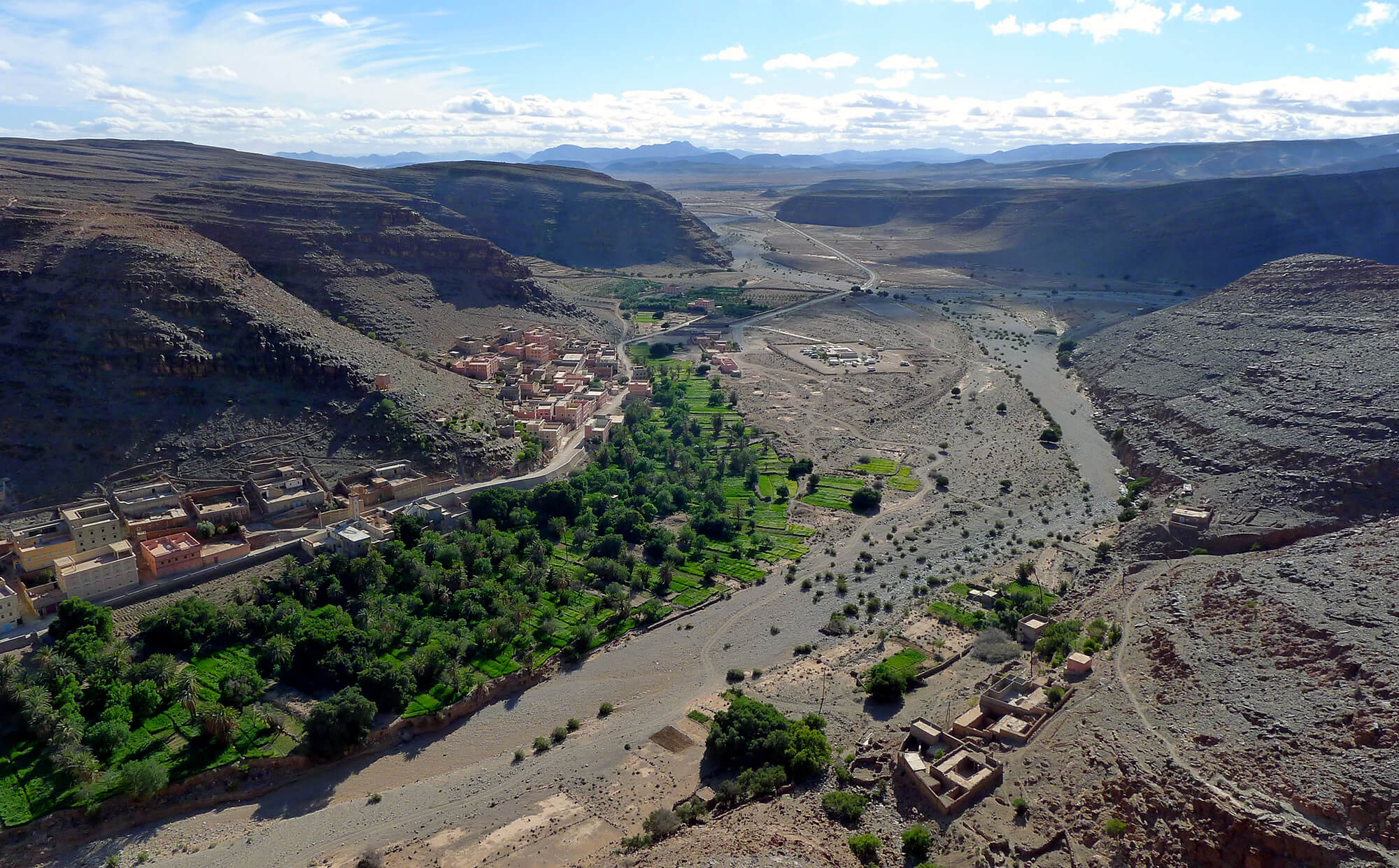
Taroudant
East of Agadir, lies Taroudant, one of Morocco’s oldest and most important cities, surrounded by ochre-colored ramparts that reach up to 6km tall. Also known as ‘’la petite Marrakech’’ since the city tends to resemble a smaller version of Marrakech from the outside. Inside the city walls lies the old medina with numerous souks that offer a mellow shopping experience compared to big sister Marrakech. You will find traditional, handmade crafts for sale including pottery, jewelry, copper, and handmade carpets.
Taroudant has many interesting, ancient tanneries to explore and you can take a tour to learn about the ancient leathermaking practice that still continues to this day. Stop by the Bijouterie Essada Silversmith and browse the collection of handmade Moroccan silverwork. Visit the Equestrian Farm de la Roseraie and explore the vast landscape of Taroudant on horseback. Many adventure options are available including one to two-hour short rides, full-day excursions, and overnight stays with a local Amazigh/Berber family. Outside the city walls, you can wander around the well-preserved, ancient Agadir Tasguent and soak up more facts about Morocco culture.
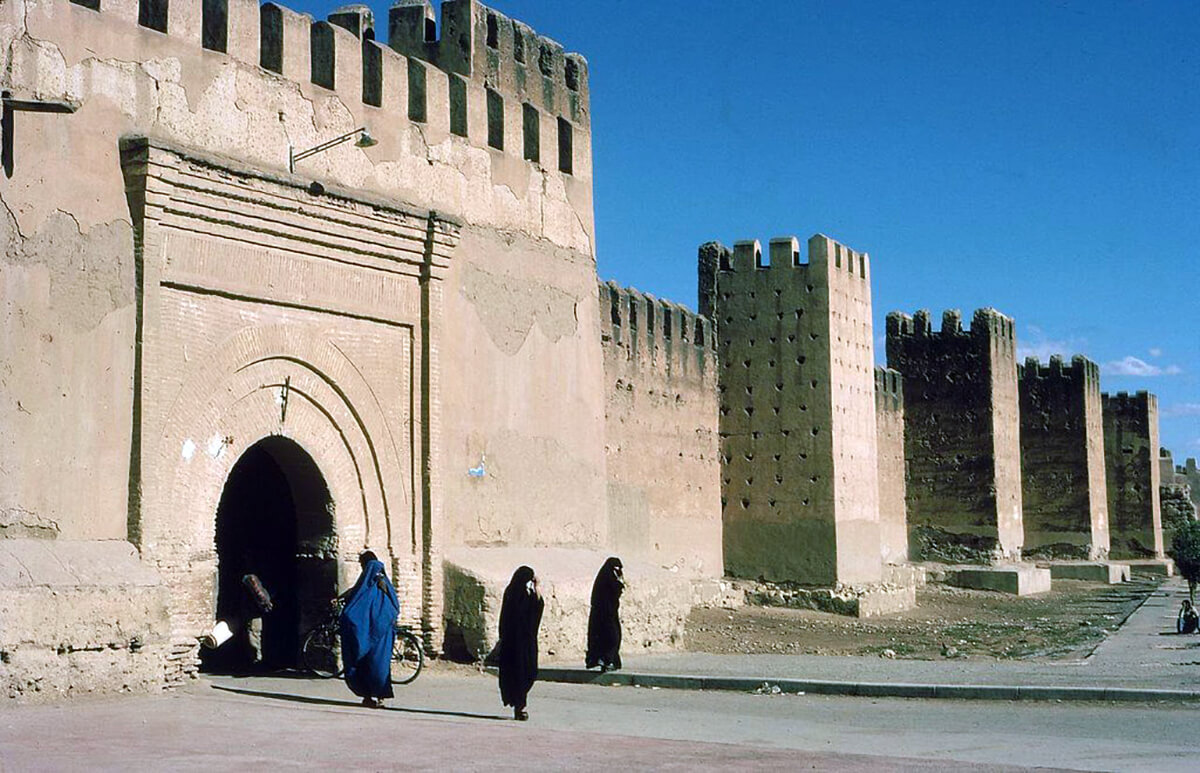
Taliouine
Taliouine is the saffron capital of Morocco and produces the most saffron in all of Africa. Located between Taroudant and Ouarzazate, this village is surrounded by the Sirwa Mountains and fields of “red gold” (saffron). Join in the festivities during the Festival du Safran, an annual celebration of the harvest of this cherished spice each November. Popular Amazigh/Berber musicians play traditional music, there is dancing and of course, plenty of saffron products available for purchase.
Visit the Souktana Cooperative any time of year to choose from a wide array of saffron and saffron-based products including facial and hand creams, soap, chocolates, and tea. You can also browse through the small yet informative Museum of Saffron at the same location. Taliouine is near Jbel Swira so you can follow easily accessible hiking trails full of natural wonders along the way. Explore the ruins of the infamous Glaoui Kasbah and you can imagine what it might have been like to live in a desolately beautiful landscape.
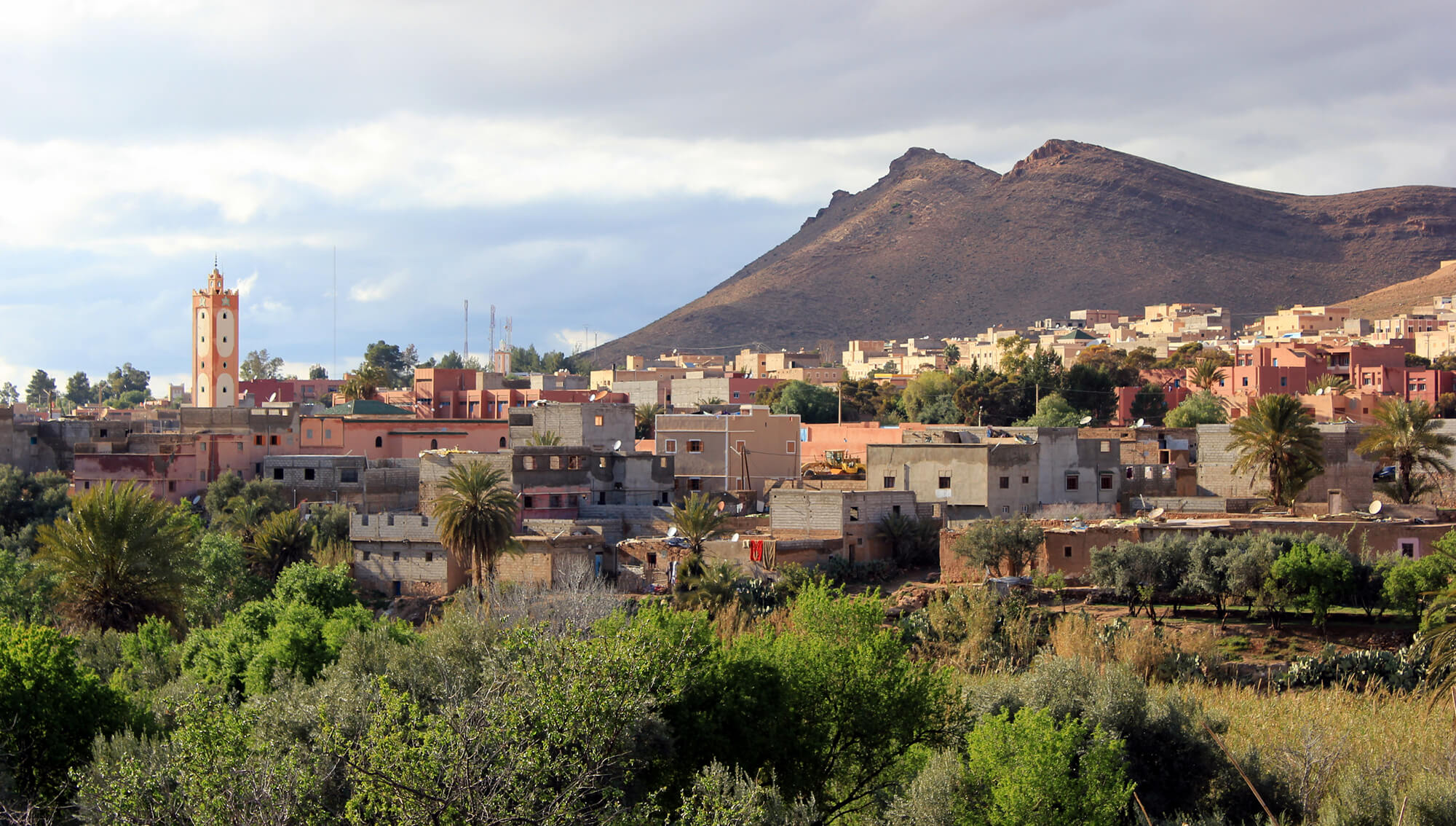
Tafraoute
This rugged landscape in the Ameln Valley is the largest producer of almonds in Morocco. Every year, an annual Almond Blossom Festival is celebrated in February when the blossoms are at their peak. You can join the festivities of traditional songs and dances that take place in the center of ancient Roman ruins. Another event in this scenic landscape is the Tafraoute Summer Music Festival usually held in August and lasts for three days showcasing local musicians.
Tafraoute is a beautiful town with earth-toned architecture that blends in with the landscape. An excellent place for hiking and rock climbing. See if you can spot La Tete du Lion, a giant rock cliff face that resembles a lion’s head best visible at sunset. For more experienced climbers, trek up to Jbel Kest, the highest peak in the region that offers breathtaking views of the valley below and beyond. Explore the most captivating oasis in the Anti-Atlas range, Ait Mansour George, just 30 km from Tafraoute. Palm trees fill this majestic, rocky canyon offering shade and cooler temperatures from the intense heat of the day.
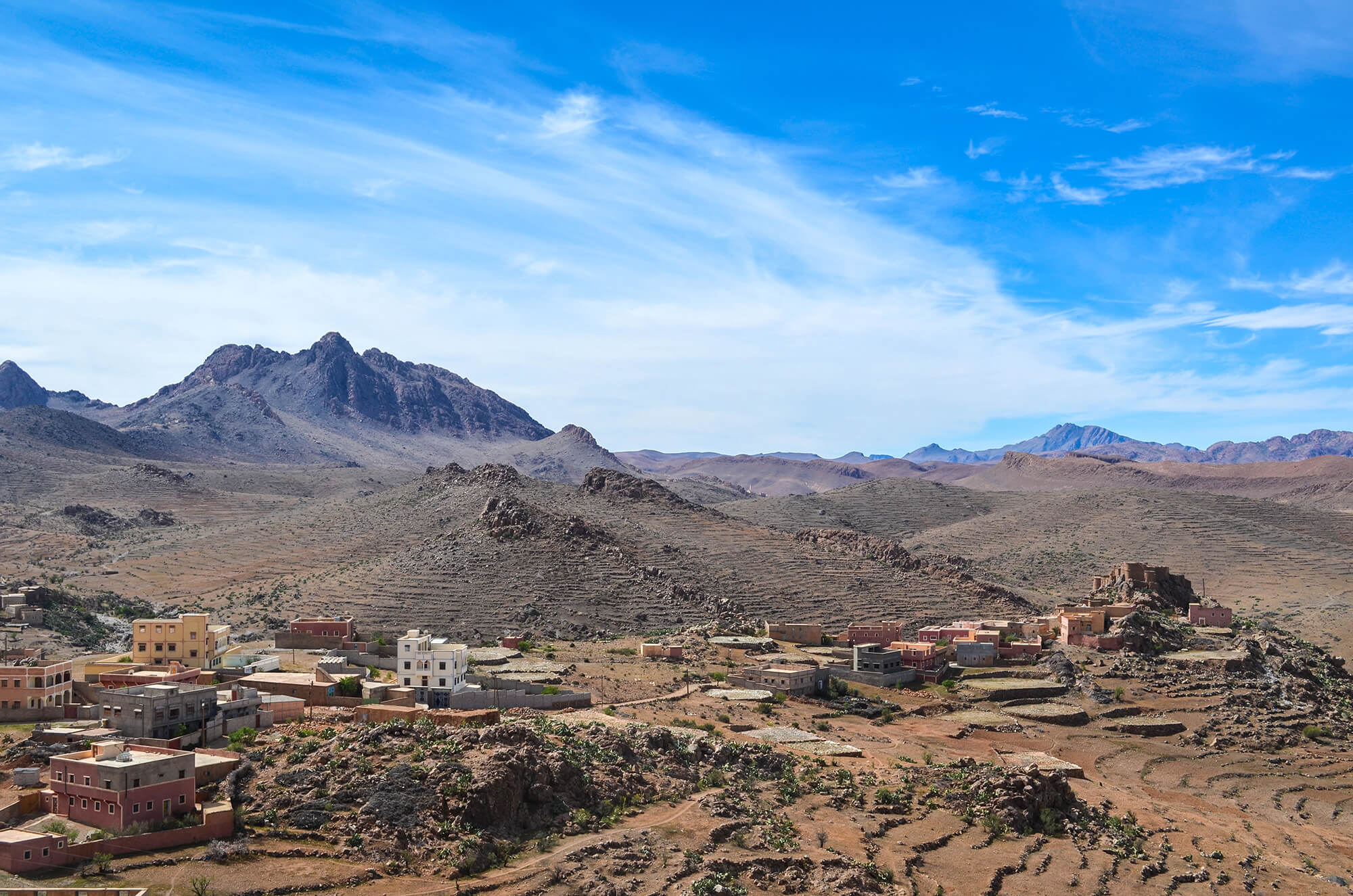
Tata
Explore the caves, the desert, and history beyond the village full of traditional Amazigh/Berber adobe houses that lay scattered about. Date palms abound in this rugged, rural village that lies close to the Algerian border. It is the largest oasis between the Atlantic Ocean and the Zagora Desert. Tata boasts a significant, archaeological heritage. You can discover some of the oldest cave paintings in Morocco.
The Caves of Messalit date back to the Paleolithic Era and are an extraordinary wonder of bizarre, eroded rock formations and interiors bursting with stalactites and stalagmites. Throughout the area are the remains of over 30 ksars (fortified villages) built from the regional pink clay. A quad biking adventure is a great way to explore this vast and stunning landscape. Historically, Tata was notorious for having one of the main slave markets in the country. Today, Amazigh/Berber and Haratin (descendants of slaves) peoples live in harmony growing carob, almonds, olives, lemon, and oranges.
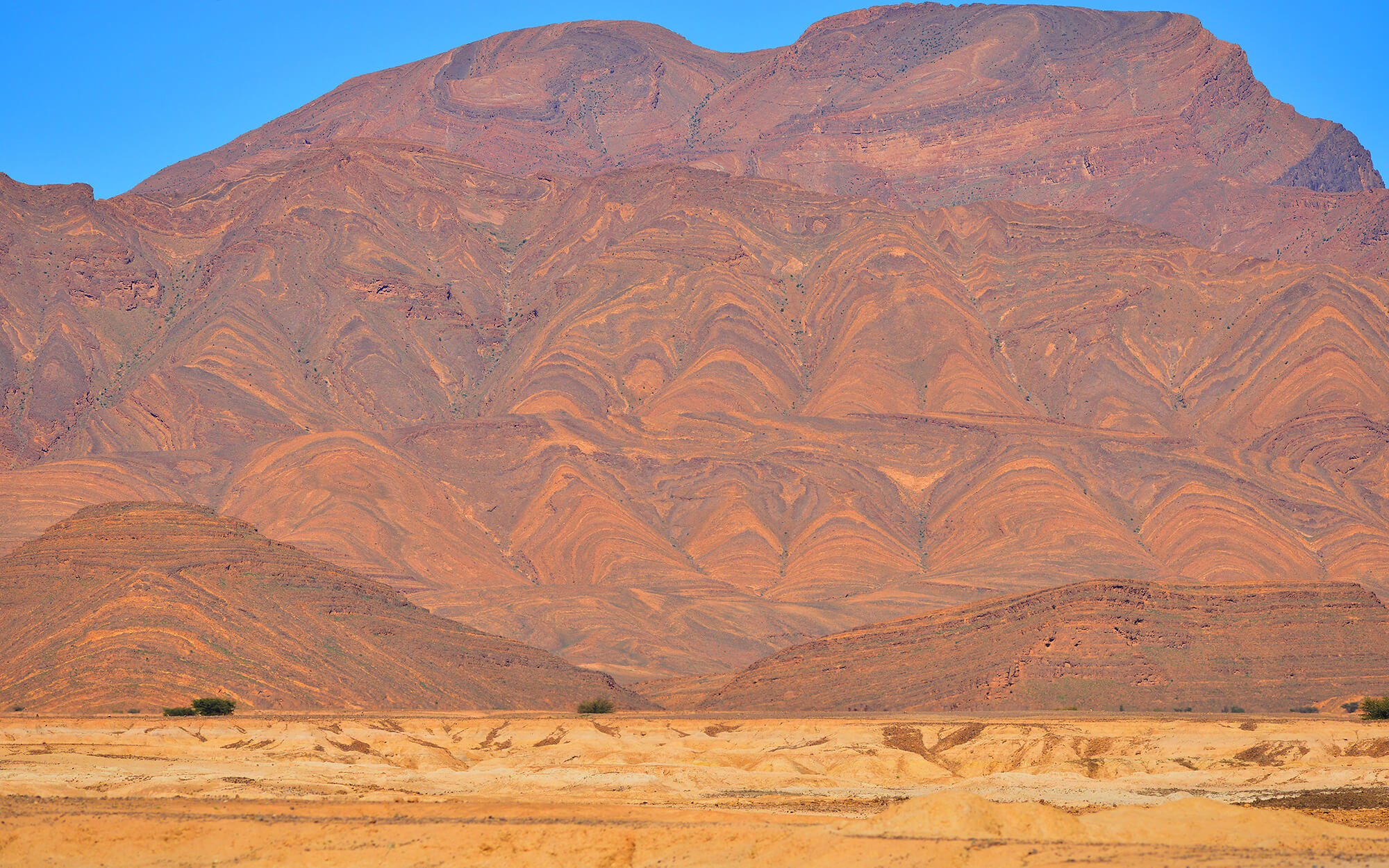
Tissint
Don’t let this rocky, desert terrain trick you for there are several waterfalls nestled around the gorge surrounded by bursts of palm tree groves. Not far from Tata, this small town became more well-known thanks to a meteorite that crashed here in 2011. Shards of the massive space rock have been found around the area ever since. Come here for a swim in the natural pools and enjoy a stroll around the town with its jewel-toned, painted buildings.
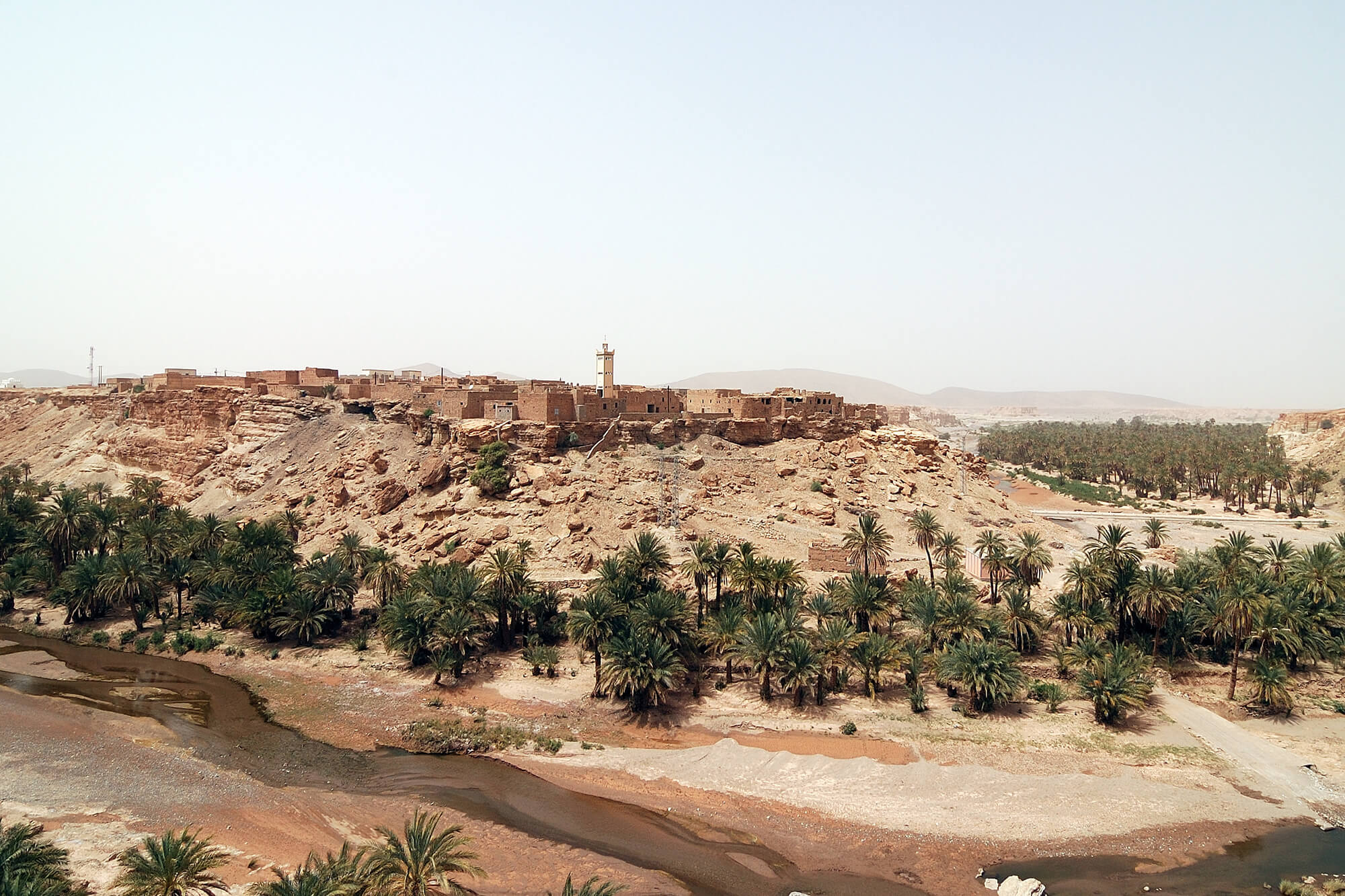
Souss Massa National Park
Stretching along the Atlantic Coast for 33,800 hectares, this national park protects diverse habitats of several native species. From forests of argan trees to sand dunes, beaches, and rocky terrain, you will discover fascinating wildlife and an interesting variety of migratory bird species.
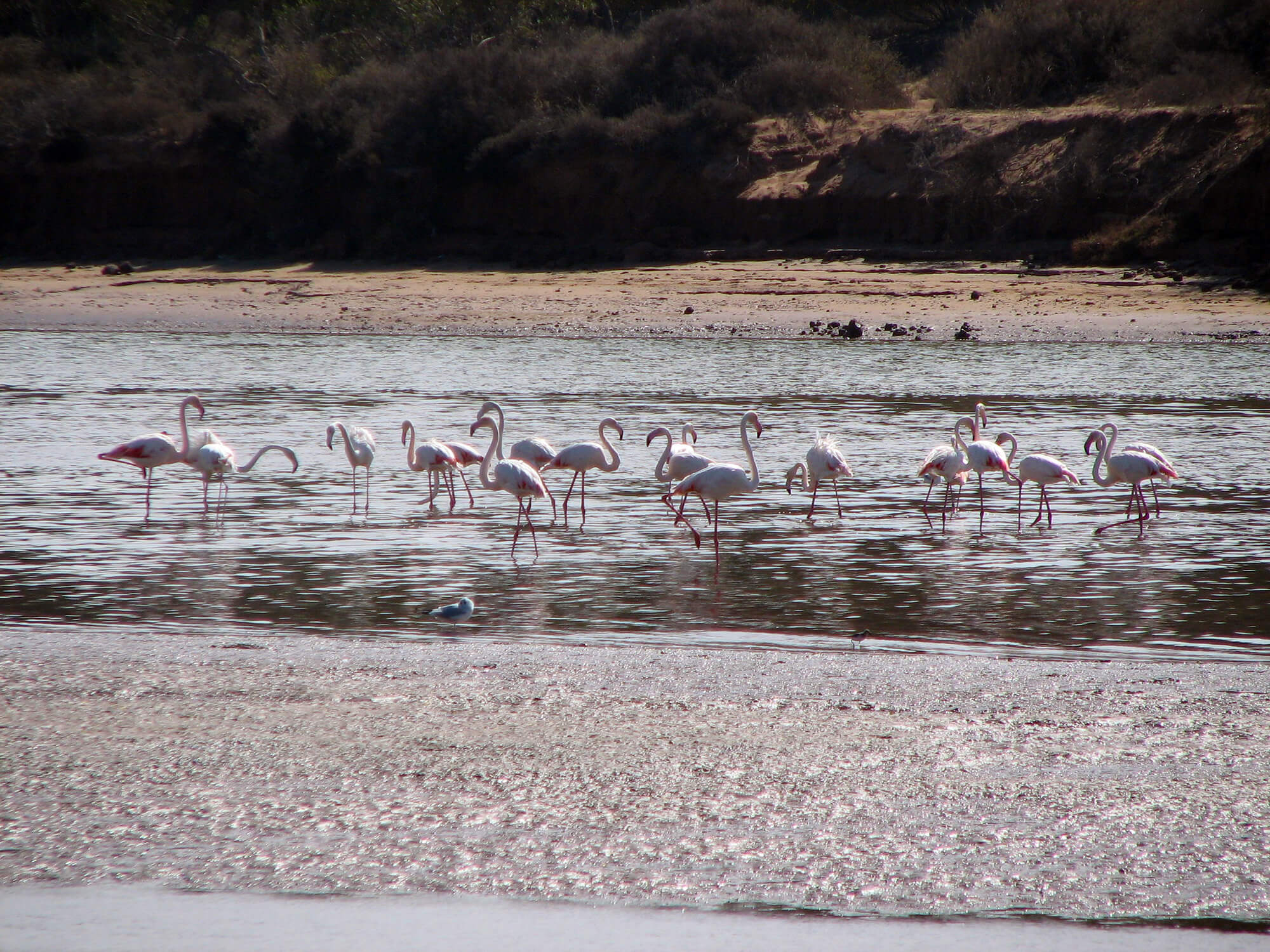
Since the majority of the Souss Valley remains unspoiled, it’s all the more reason to experience this majestic, rugged landscape full of endless surprises.
